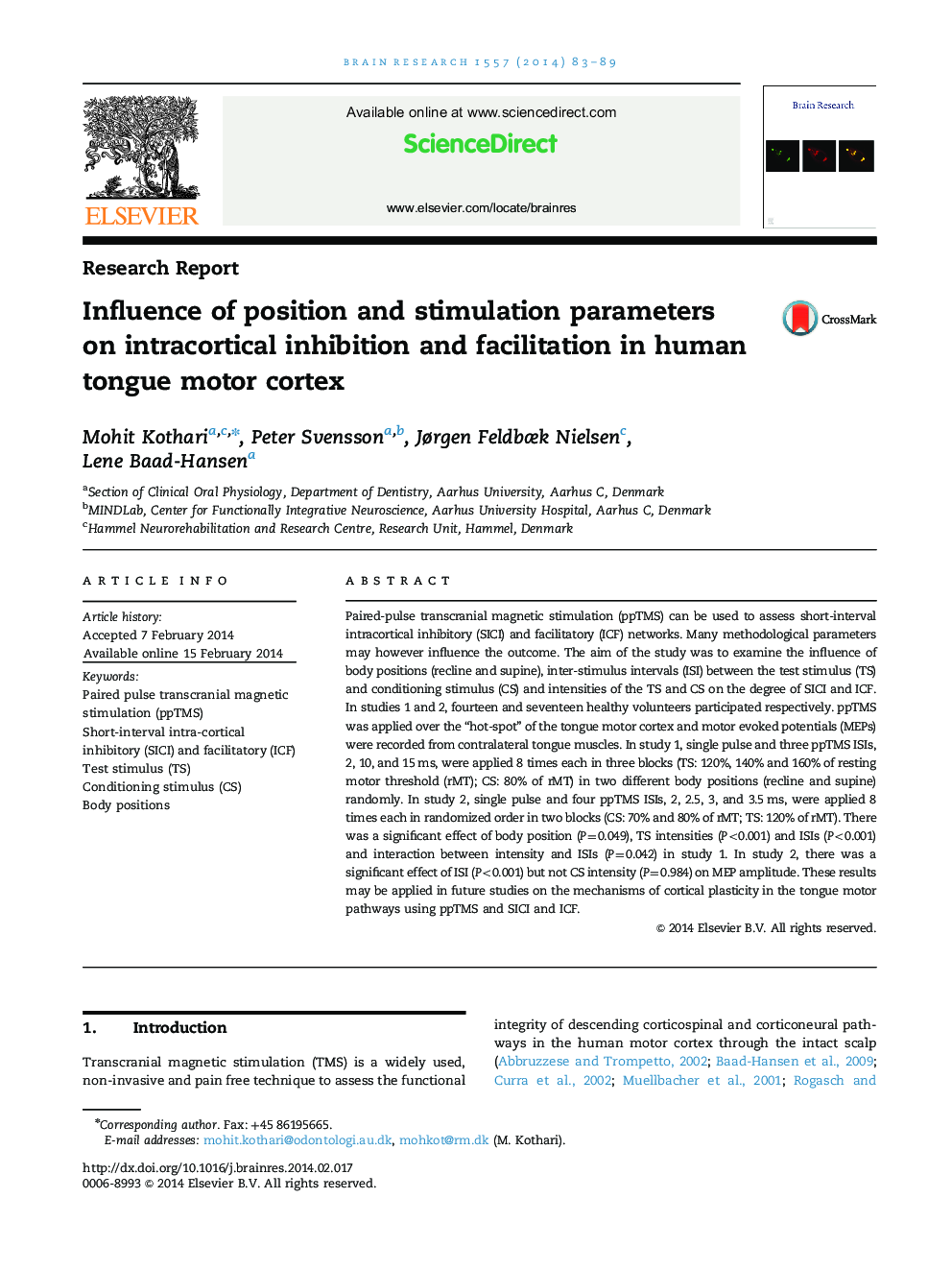| Article ID | Journal | Published Year | Pages | File Type |
|---|---|---|---|---|
| 6263388 | Brain Research | 2014 | 7 Pages |
â¢Influence of body position and stimulation parameters on interstimulus intervals.â¢Recline body position evoked larger motor evoked potentials than supine position.â¢Different test stimulus intensities influenced inhibitory and facilitatory networks.â¢Two conditioning stimulus had no difference in inducing intracortical modulatory effect.
Paired-pulse transcranial magnetic stimulation (ppTMS) can be used to assess short-interval intracortical inhibitory (SICI) and facilitatory (ICF) networks. Many methodological parameters may however influence the outcome. The aim of the study was to examine the influence of body positions (recline and supine), inter-stimulus intervals (ISI) between the test stimulus (TS) and conditioning stimulus (CS) and intensities of the TS and CS on the degree of SICI and ICF. In studies 1 and 2, fourteen and seventeen healthy volunteers participated respectively. ppTMS was applied over the “hot-spot” of the tongue motor cortex and motor evoked potentials (MEPs) were recorded from contralateral tongue muscles. In study 1, single pulse and three ppTMS ISIs, 2, 10, and 15Â ms, were applied 8 times each in three blocks (TS: 120%, 140% and 160% of resting motor threshold (rMT); CS: 80% of rMT) in two different body positions (recline and supine) randomly. In study 2, single pulse and four ppTMS ISIs, 2, 2.5, 3, and 3.5Â ms, were applied 8 times each in randomized order in two blocks (CS: 70% and 80% of rMT; TS: 120% of rMT). There was a significant effect of body position (P=0.049), TS intensities (P<0.001) and ISIs (P<0.001) and interaction between intensity and ISIs (P=0.042) in study 1. In study 2, there was a significant effect of ISI (P<0.001) but not CS intensity (P=0.984) on MEP amplitude. These results may be applied in future studies on the mechanisms of cortical plasticity in the tongue motor pathways using ppTMS and SICI and ICF.
